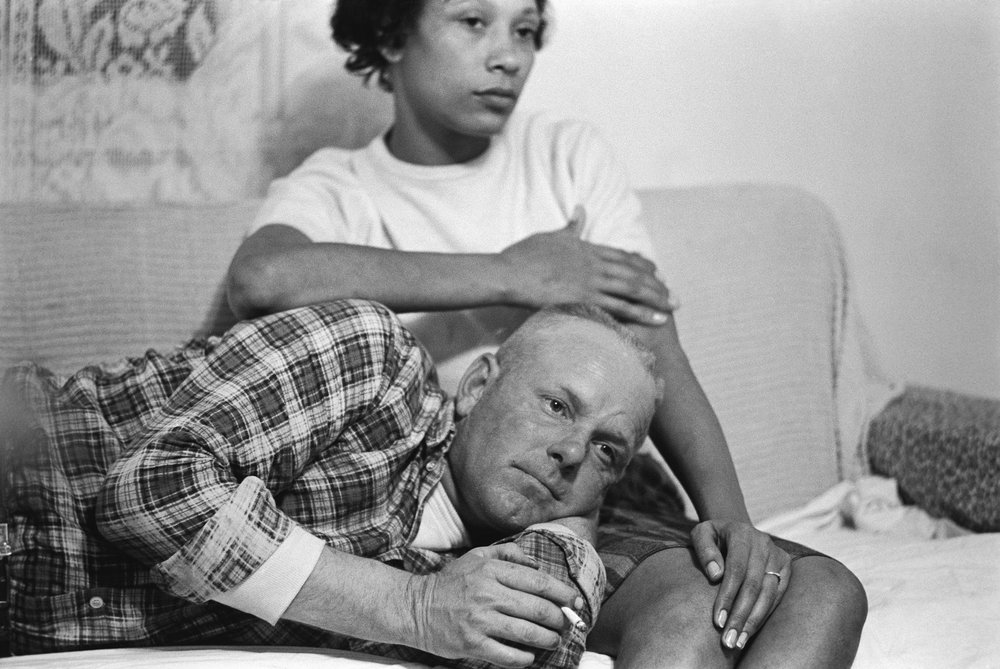“Not a day goes by that I don’t think of Richard and our love, our right to marry, and how much it meant to me to have that freedom to marry the person precious to me, even if others thought he was the ‘wrong kind of person’ for me to marry. I believe all Americans, no matter their race, no matter their sex, no matter their sexual orientation, should have that same freedom to marry. Government has no business imposing some people’s religious beliefs over others. Especially if it denies people’s civil rights. I am still not a political person, but I am proud that Richard’s and my name is on a court case that can help reinforce the love, the commitment, the fairness, and the family that so many people, black or white, young or old, gay or straight seek in life. I support the freedom to marry for all. That’s what Loving, and loving, are all about.” – Mildred Loving.1
On June 2, 1958, two childhood sweethearts, residents of Virginia, Mildred Jeter, an 18 year old, half African American and Cherokee woman, and Richard Loving, a 24 year old white man, were married in the District of Columbia, where it is legal for any man and women to marry regardless of their skin color. However, the District of Columbia was one of the few places where interracial marriages were legal. The District of Columbia along with other states believed a person could marry anyone they wanted regardless of the color of their skin. Shortly after their wedding, they returned to their home in Virginia. This was July 1958 16 and the State of Virginia did not recognize marriage between interracial couples which led to their arrest in the middle of the night in their home. “The Sheriff barged into the house, walked into their bedroom in the middle of the night, with no permission and demanded to know why they were together. Mr Loving worried of such a possibility told them his marriage license was in the drawer of the nightstand. But the sheriff arrested them anyway and charged them with violating that state’s anti-miscegenation laws prohibiting inter-racial marriages.” 2 They were arrested for violating the States Racial Integrity Act of 1924. The act made it illegal for a white person to marry anyone other than a white person, and were not able to marry unless they could prove the man and women were of pure white blood. If anyone violated this act it could result to 1 to 5 years in prison. In court, the Lovings both pleaded guilty and were sentenced to 1 year in prison. When they went to the Virginia Supreme Court Judge Leon M. Bazile found them guilty and suspended their one year sentence “On the condition that the couple leave the state and not return to Virginia together for 25 years.” 3

At that point there was nothing the Lovings could do anymore but leave. They left everything they had, including friends and family and tried to make a life for themselves in Washington DC. They would at times drives back to Virginia to see family and were extremely cautious to not be seen together. They were never together in Virginia unless they were inside the house where no one could see them. Some days Mildred would stay in Virginia and Richard would leave and on some they did the opposite. It was a tiring journey and Mildred could not take it anymore. Washington was not the ideal place where she wanted to raise her kids or live the rest of her life. She yearned for their life was back home in Virginia. During this time the Civil Rights Movement was rising and it inspired Mildred to take a huge step. In 1964, Mildred wrote to Attorney General Robert F. Kennedy hoping he could help. Kennedy then told her to contact the American Civil Liberties Union (ACLU). Bernard S. Cohen and Philip J. Hirschkop, ACLU lawyers, were more than eager to take up the case.4
Cohen and Hirschkop decided to take the case to the District Court of Virginia. It took a whole year for the suit to go through. However nothing changed. Judge Bazile’s argument was “Almighty God created the races white, black, yellow, Malay and red, and he placed them on separate continents. And but for the interference with his arrangement there would be no cause for such marriages. The fact that he separated the races shows that he did not intend for the races to mix.” 5 His prejudiced response gave them the grounds they needed to appeal to the Virginia Supreme Court of Appeals, however Judge Bazile’s decisions was upheld. It was the time every lawyer dreams of, for them to take the next big step: the Supreme Court. Finally, on April 10, 1967, the case came before the Supreme Court. This was the first time, the Supreme Court had to decide about interracial marriage bans. Neither one of the attorneys had experience in federal courts. Hirschknop was only two years out of law school and Bernard who had been out of law school for over three years, still lacked real experience in the Supreme Court. One of the biggest civil rights cases in the United States was being argued by two lawyers who lacked experience drastically lowering their chance of winning. Their argument was that Virginia’s law violates both the due process clause of the 14th amendment and the Equal Protection Clause. “The clear and central purpose of the Fourteenth Amendment is to eliminate all official state sources of invidious racial discrimination in the states.” 6 The lawyers used their evidence and knowledge to express how civil rights are part of any person’s constitutional and fundamental human right for pursuit of happiness, no matter the color their skin. The state made its argument based on “equal application theory”. They argued since both received the same punishment, they were not discriminated based upon their race, i.e. there was nothing constitutionally wrong with the court’s decision.

Neither Mildred nor Richard Loving appeared in court. However Richard sent a letter to the justices “Tell the Court I love my wife and it is just not fair that I cannot live with her in Virginia.”7 The love of the Loving was strong and the United States Supreme Court Justices granted it constitutional protection it deserve equally under the law. On June 6 1967, the Court made its decision. Their unanimous decision ruled in favor of the Loving family. Bernard S. Cohen and Philip J. Hirschkop, won the case for the Lovings and proved the State of Virginia wrong. Loving v. Virginia 1967 forced 16 US states to strike down their anti-miscegenation laws.8. Chief Justice Warren delivered the opinion of the court. He stated “There is patently no legitimate overriding purpose independent of invidious racial discrimination which justifies this classification. The fact that Virginia prohibits only interracial marriages involving white persons demonstrates that the racial classifications must stand on their own justification, as measures designed to maintain White Supremacy.” 9

Nine years after the Lovings’ arrest, Mildred and Richard could finally go home in peace. Richard built a house for his wife and 3 children in Virginia where they live together having overturned unjust laws. The battle was finally over, couples of every race could intermarry in any state they chose. The Lovings got to live and raise their children in their home state. Sadly, this beautiful family’s happiness was cut short when a drunk driver ended the life of Richard Loving on June 29, 1975. Mildred lost sight in her right eye in the same accident. She continued to lived in the house Richard built for her and their children. She never remarried. She could never love anyone as much as she loved Richard. She did not leave her house as much after his death and remained pretty quiet until recent years. She became an even bigger inspiration to many. She was interviewed and asked about her opinion on same sex marriage. She became a huge advocate for same-sex marriage. From her own experience, she knew that the government has no right to tell anyone who they can and cannot marry. Her story helped the landmark 2015 same sex marriage case that made it legal for adult to marry no matter their gender. Last year was the 50th anniversary of the Loving case, and on June 12, we celebrate the unofficial day called “Loving Day” to remember the Loving case and the end of all bans on interracial marriages. Their love is eternal and their case will be remembered as the case that showed hope and love can overcome injustice and discrimination. “Thats what Loving and loving are all about.” 10
- Stolberg, Sheryl G. “50 Years After Loving v. Virginia.” The New York Times. June 11, 2017. Accessed April 28, 2018. https://www.nytimes.com/2017/06/11/us/50-years-after-loving-v-virginia.html. ↵
- Halman, RW. “Miscegenation: Loving v. Virginia.” Spirit of a Liberal (blog). Accessed April 28, 2018. http://www.theliberalspirit.com/miscegenation-loving-v-virginia/. ↵
- Roberts, Dorothy E. “Loving v. Virginia as a Civil Rights Decision.” Review of Loving v. Virginia Supreme Court Case. 2014, 175-209. Accessed April 28, 2018, http://www.nylslawreview.com/wp-content/uploads/sites/16/2015/02/Volume-59-1.Roberts.pdf. ↵
- Holland, Brynn. “Mildred and Richard: The Love Story That Changed America.” History Stories. February 17, 2017. Accessed April 28, 2018. Mildred and Richard: The Love Story that Changed America. ↵
- Holland, Brynn. “Mildred and Richard: The Love Story That Changed America.” History Stories. February 17, 2017. Accessed April 28, 2018. Mildred and Richard: The Love Story that Changed America. ↵
- Loving v. Virginia, 395 (June 12, 1967). ↵
- Holland, Brynn. “Mildred and Richard: The Love Story That Changed America.” History Stories. February 17, 2017. Accessed April 28, 2018. Mildred and Richard: The Love Story that Changed America. ↵
- Deniz, Gevrek. “Interracial Marriage, Migration and Loving.” The Review Of Black Political Economyno. 1 (2014): 25. RePEc, EBSCOhost (accessed March 27, 2018) ↵
- Loving v. Virginia, 395 (June 12, 1967). ↵
- Stolberg, Sheryl G. “50 Years After Loving v. Virginia.” The New York Times. June 11, 2017. Accessed April 28, 2018. https://www.nytimes.com/2017/06/11/us/50-years-after-loving-v-virginia.html. ↵



115 comments
Eric Ortega Rodriguez
Wow, what a fascinating story about love. This article was very informative, I have never heard of this case or Loving Day. Living in the world today, we often forget that things were not as easy in the past. Racism was a difficult barrier among people. It is beautiful to see Richard Loving and Mildred Jeter fall in love even with the negative stigma around interracial marriage around this time. I also find it fascinating how Bernard S. Cohen and Philip J. Hirschkop, were able to take this to the supreme court and win, even with their limited experience. Overall, an amazing story and article, and truly a love story which demonstrates that love does not have limits or regulations.
Sabrina Hsu
I was surprised that I have never heard of this story before and even more surprised that I have never heard of Loving Day, but I know after reading this I will always celebrate that day. This story is so inspiring because Richard and Mildred fought for what they wanted and never gave up until they got it, and I’m so glad they did because they are the reason that people can marry whoever they want no matter what race they are. Mildred even played a role in the same sex marriage case which is even more inspiring and amazing.
Jocelyn Moreno
It sadden my heart reading that the Loving family had to hid their love for many years because it was illegal and ‘socially unacceptable’. I believe anyone has the right to love who they want no matter skin, race, sex or gender. The way they reached out and fought for their love to be socially acceptable is bold especially during this time period. Today’s present day and the past have many similarities. When reading the article it reminded me of the Same-sex dispute whether they can be able to get married or not. Love is love and they should be able to marry, nothing should matter as long as the two partners love one another. The author of this story did a great job of getting the point across and what the Loving’s purpose was and what they continue to fight for.
Faten Al Shaibi
Racism is one of the worst issues affecting human rights, and there is no difference between people even if their colors or nationalities differ.
The issue of Richard and Mildred was one of the most important issues that preserved the human rights of the citizen, and proved that love can make impossible even if the laws are not adjustable, as the writer said (love can overcom injustice and discrimination)
But the the story of their love was very sad and it’s ended in a tragic way.
Harashang Gajjar
Although Richard died in 1975 following a car accident, Mildred was able to live long enough to offer her support for gay marriage. On the 40th anniversary of the Lovings’ landmark case and a year before her death in 2008, she said in a public statement: “The older generation’s fears and prejudices have given way, and today’s young people realize that if someone loves someone, they have a right to marry.
Max Lerma
I’m not entirely sure what you mean by remaining vigilant so that civil rights does not become total equality. From an economic stand point I agree that total equality kills incentive and any form of economic growth, however, I would contend that equality in how we view and treat one another leads to only positive ramifications. What is your thought process on this? Also, what state benefits are you referring to when you speak about marriage?
Engelbert Madrid
A phenomenal article sharing the story of two young people that never had the same freedom of other couples, because they were racially different. I had never heard of the Loving Case before in my life, and I believe it is something that we should always remember during the Civil Rights Movement. As human beings, we should never judge a certain group of people based on their ethnicity, culture, sexual orientation, and et cetera. If we want the world to be a better place, we should start treating every individual equally and justly.
Micaela Cruz
Interracial marriages was a heavy topic during the time period in which the Loving’s lived. Having to deal with segregation along with the laws forbidding interracial marriage was such a big pill to swallow, but the Loving’s did not allow anything to stand in their way. The strong love shared between Mildred and Richard is truly admirable; their love was strong enough to stand the test of time, along with a Supreme Court case. I had heard of this story prior to reading this article but this article provided a much deeper insight into the Loving’s story along with the struggles their defense lawyers encountered.
Richard Morales
This piece is a truly touching one where true love prevails. I was unaware that there were still laws against interracial marriage in the 60’s. I was delighted to hear the story of Loving v. Virginia, and how two lawyers with minimal experience fought to legalize interracial marriage. I felt happy when I learned how they returned to Virginia to live in a home built by Mr.loving. It’s tragic though how his life was ended by an accident involving a drunk driver.
Raymond Munoz
I first want to go over the negatives of the article and then dive into the positives. There were some minor things in the beginning like repetition of statements and grammatical errors that made it a little frustrating to read. Though, the most frustrating part of the article was the “one-off” sentences that stated a fact of the Love family but then never elaborated on it. I believe that every fact you put into a story should be elaborated on so the readers gains a better understanding of your point. Now, all frustrations aside, the article did a good job at emphasizing the moral of the story. With the authors emphasis I easily understood the moral of the Love family story was to stand up for what you believe in, such great emphasis almost makes the frustrations disappear.
Maria Mancha
Thank you for your comment, however, I do believe that I elaborated sufficiently enough on the “Loving” family. If there was not enough information for you it’s because the information simply did not exist on the family. Most of the information about their family was kept private. I encourage you to do research of your own though.